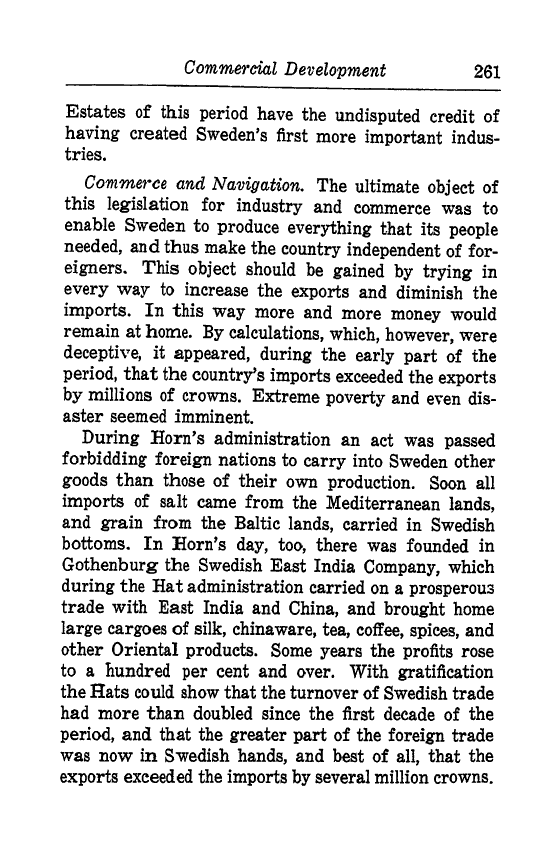
Full resolution (TIFF) - On this page / på denna sida - XIV. Reign of Ulrica Eleonora and Frederick I, 1719–1751 - G. Industrial and Cultural Development

<< prev. page << föreg. sida << >> nästa sida >> next page >>
Below is the raw OCR text
from the above scanned image.
Do you see an error? Proofread the page now!
Här nedan syns maskintolkade texten från faksimilbilden ovan.
Ser du något fel? Korrekturläs sidan nu!
This page has never been proofread. / Denna sida har aldrig korrekturlästs.
Commercial Development 261
Estates of this period have the undisputed credit of
having created Sweden’s first more important indus-
tries.
Commerce and Navigation. The ultimate object of
this legislation for industry and commerce was to
enable Sweden to produce everything that its people
needed, and thus make the country independent of for-
eigners* This object should be gained by trying in
every way to increase the exports and diminish the
imports. In this way more and more money would
remain at home. By calculations, which, however, were
deceptive, it appeared, during the early part of the
period, that the country’s imports exceeded the exports
by millions of crowns. Extreme poverty and even dis-
aster seemed imminent.
During Horn’s administration an act was passed
forbidding foreign nations to carry into Sweden other
goods than those of their own production. Soon all
imports of salt came from the Mediterranean lands,
and grain from the Baltic lands, carried in Swedish
bottoms. In Horn’s day, too, there was founded in
Gothenburg the Swedish East India Company, which
during the Hat administration carried on a prosperous
trade with East India and China, and brought home
large cargoes of silk, chinaware, tea, coffee, spices, and
other Oriental products. Some years the profits rose
to a hundred per cent and over. With gratification
the Hats could show that the turnover of Swedish trade
had more than doubled since the first decade of the
period, and that the greater part of the foreign trade
was now in Swedish hands, and best of all, that the
exports exceeded the imports by several million crowns.
<< prev. page << föreg. sida << >> nästa sida >> next page >>